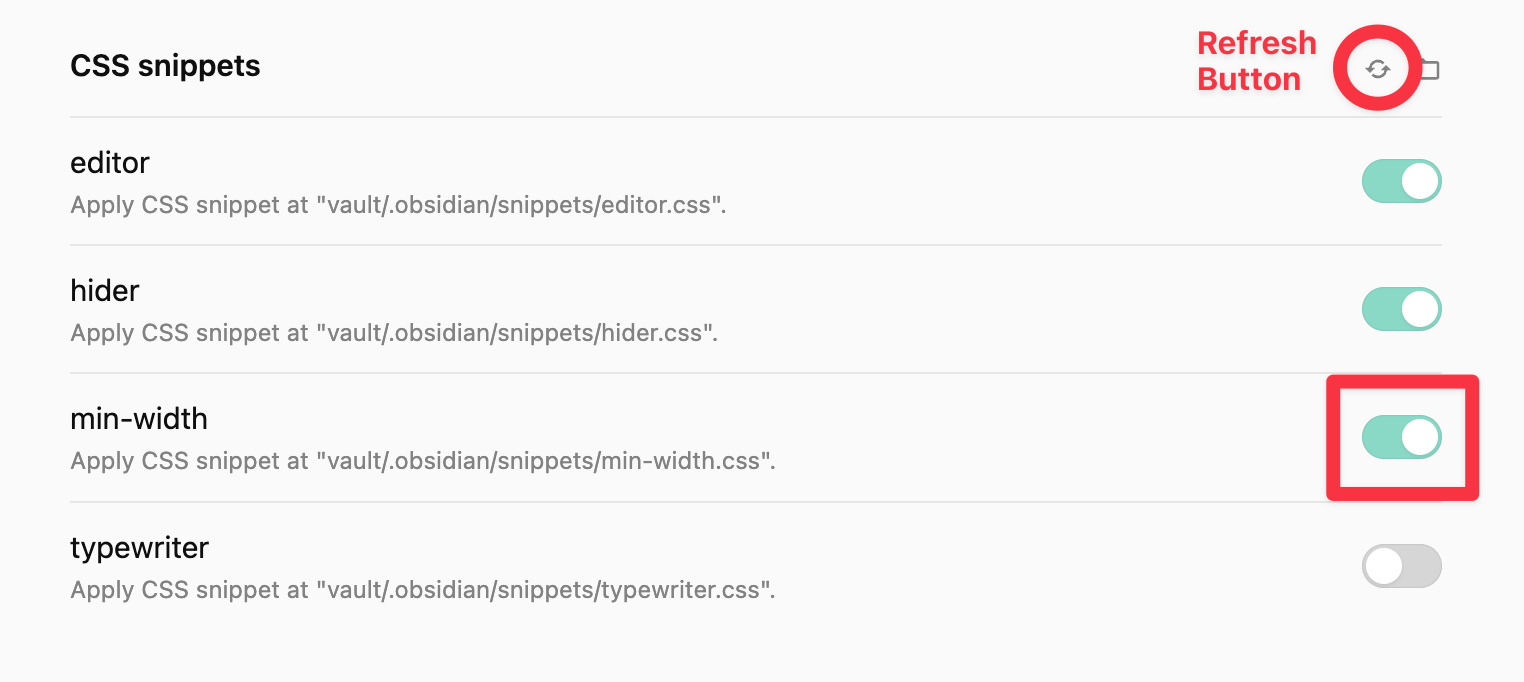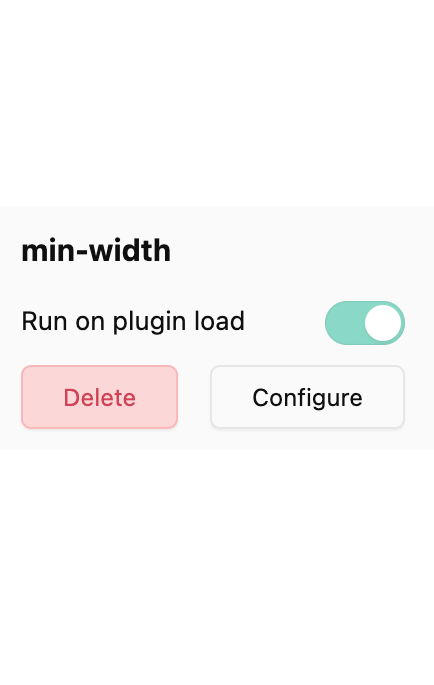Updates
A simple CSS rule sets the minimum width of the active pane in Obsidian.
min-width.css
.mod-root .mod-active {
min-width: min(88%, 40rem);
}
It sets the minimum width to either 40 columns or 88% of the whole editing area, depending on which is smaller. Obsidian will auto resize the active pane to ensure it is wider enough and shrink other panes accordingly.
The snippet does not work in horizontal splits where panes stack vertically. See the chapter JavaScript Helper below how to work around it.
How to Add CSS Snippets in Obsidian
Save the CSS snippet as file .obsidian/snippets/min-width.css in the vault. Create the folder .obsidian/snippets if it does not exist.
Now the file should appear in the Appearance settings page. Toggle the switcher to enable the CSS snippet in the file.

JavaScript Helper
CSS is useless when it can not select the target elements. To make the snippet work in horizontal splits, the CSS rule has to select the .mod-horizontal node when it has a .mod-active child. However, the pseudo-class selector :has()1 is not available in Obsidian yet.
JavaScript can help to add classes and attributes to HTML elements.
I also want to make some panes wider, such as Excalibrain2. The JavaScript code can also set the view type to the proper elements. The view type of the Excalibrain pane is excalidraw.
First, update the CSS snippet to make Excalibrain panes wider. Indeed, it makes all Excalidraw panes wider.
min-width.css
.mod-root .mod-active {
min-width: min(88%, 40rem);
}
.mod-root .mod-active[data-type="excalidraw"] {
min-width: min(88%, 60rem);
}
The last, let Obsidian run some code when the active pane has changed. I use QuickAdd3 to manage the scripts. Save the following code snippet as min-width.js in the vault.
min-width.js
const DATA_TYPE = "data-type";
function setOrRemoveDataType(el, dataType) {
if (dataType !== undefined) {
el.setAttribute(DATA_TYPE, dataType);
} else {
el.removeAttribute(DATA_TYPE);
}
}
module.exports = async function ({ app }) {
app.workspace.on("active-leaf-change", (leaf) => {
// clear .mod-active on .mod-horizontal
for (const el of app.workspace.containerEl.getElementsByClassName(
"mod-active mod-horizontal"
)) {
el.classList.remove("mod-active");
}
// bubble up data-type
const dataType = leaf.containerEl
.getElementsByClassName("workspace-leaf-content")[0]
?.getAttribute(DATA_TYPE);
setOrRemoveDataType(leaf.containerEl, dataType);
// add .mod-active and data-type to current horizontal split container
const parentNode = leaf.containerEl.parentNode;
if (parentNode.classList.contains("mod-horizontal")) {
parentNode.classList.add("mod-active");
setOrRemoveDataType(parentNode, dataType);
}
});
};
Then run it when Obsidian starts by following these steps:
- Click the button “Manage Macros” in the QuickAdd settings.
- Add a new macro and add the user script “min-width” to the macro.
- Save the macro and check the option “Run on plugin load”.


That’s it. Restart Obsidian and the code should be effective. See how it works in the screen recording below.
There are two extra plugins used in the video, Snippet Commands4 and Cycle through Panes.5
Similar Work
This work is inspired by the Vim option winwidth, one of my favorite feature of Vim.
The awesome plugin Sliding Panes6 provides the similar feature for Obsidian. However, it has three problems that I cannot stand.
The first, when the option “Leaf Width on Desktop/Mobile” is wider than the whole editing area, I have to scroll horizontally to see the current active pane. Although the plugin has separated the options for Desktop and Mobile, but different devices have different screen sizes. What’s worser, the app window can be any size on Desktop. The option must be less than the smallest screen width when Obsidian Sync is in use, which is not a good choice for wider devices.
The second, the plugin does not play well with horizontal splits.
The last, I really want to set the different minimum widths for different windows.
References
MDN. (2016, October 27). :has() - CSS: Cascading Style Sheets. MDN. https://developer.mozilla.org/en-US/docs/Web/CSS/:has ↩︎
zsviczian. (2022, May). Excalibrain: A Graph View to Navigate Your Obsidian Vault. GitHub. https://github.com/zsviczian/excalibrain ↩︎
chhoumann. (2021, June). QuickAdd for Obsidian. GitHub. https://github.com/chhoumann/quickadd ↩︎
deathau. (2021, October). Snippet Commands Obsidian Plugin. GitHub. https://github.com/deathau/snippet-commands-obsidian ↩︎
phibr0. (2020, November). Cycle Through Panes Obsidian Plugin. GitHub. https://github.com/phibr0/cycle-through-panes ↩︎
deathau. (2020, October). Sliding Panes (Andy Matuschak Mode) Obsidian Plugin. GitHub. https://github.com/deathau/sliding-panes-obsidian ↩︎